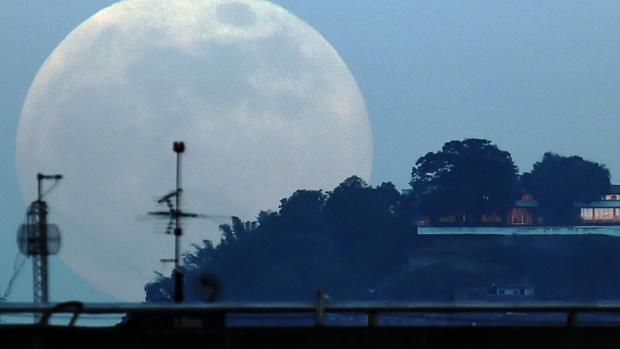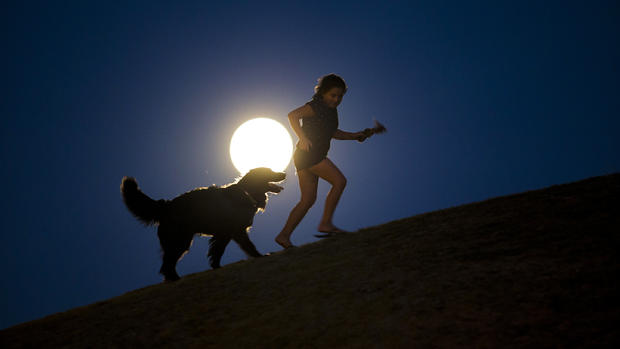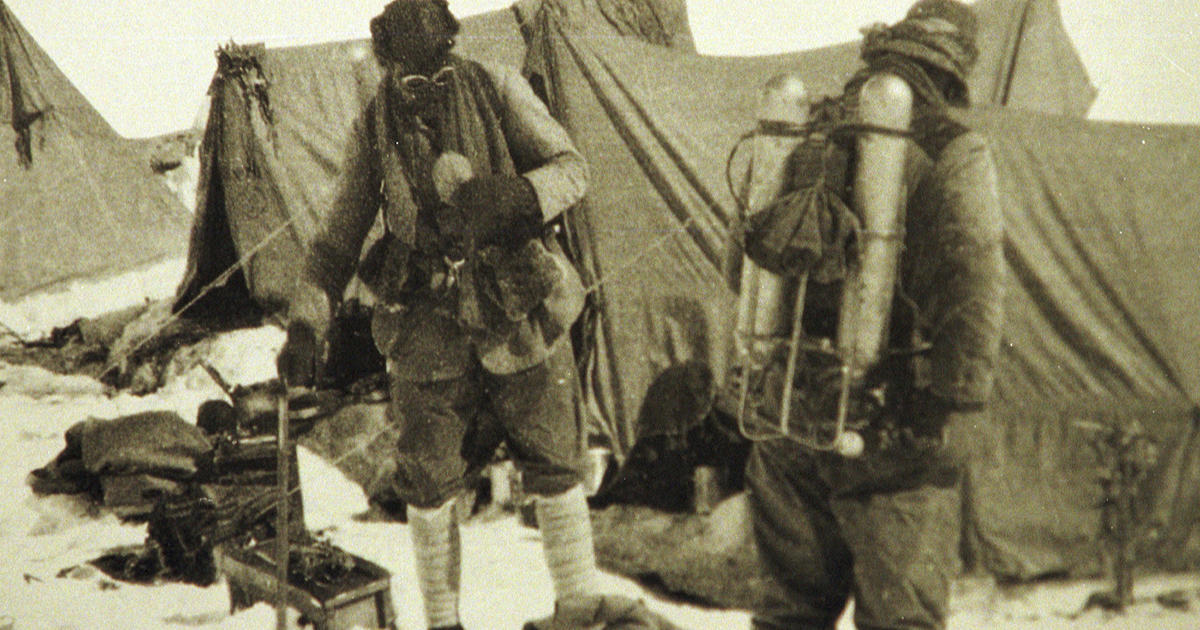"Supermoon" in November will be closest in decades
Earthlings are about to be treated the biggest and brightest full moon of the year — and this so-called supermoon will be extra special. It will be the closest the moon has come to us in almost 69 years. And the full moon won’t come this close again until 2034.
“Supermoon” is the popular term for when a full moon coincides with what scientists call the moon’s perigee — the point in its orbit when the moon makes its closest approach to Earth.
This time around, NASA says closest approach will occur at 6:21 a.m. EST Monday, when the moon comes within 221,523 miles (356,508 kilometers), as measured from the center of the Earth to the center of the moon. The peak full moon will occur at 8:52 a.m. EST.
At that time, however, the moon will be setting and the sun rising, at least on the U.S. East Coast. So prime viewing for those who want to see the supermoon in all its glory will be Sunday and Monday nights.
This supermoon is actually the second in a series of three to occur this fall. The first happened the night of October 16, and social media quickly filled up with stunning images of the unusually big, bright moon.
NASA planetary geologist Noah Petro is urging everyone to step outside and soak in the view Sunday and Monday.
“Everyone gets to see the moon,” Petro said. “It’s a great shared resource for all humanity.”
NASA says this supermoon will appear about 30 percent brighter and 14 percent larger than a typical full moon.
But it takes a real expert to notice the difference.
Petro, deputy project scientist for the Lunar Reconnaissance Orbiter circling the moon, said Thursday that even he won’t be able to see much difference in size and luminosity. What counts, he said, is getting people “talking, thinking and caring about the moon.”
For those who can’t get to a good viewing spot, or if weather conditions are poor, the Slooh Community Observatory will be live streaming video of the supermoon on their website and Facebook along with expert commentary from its chief astronomer and others.
The full moon that falls in November each year has several nicknames stemming from Native American folklore and other traditions. According to the Old Farmer’s Almanac, the Algonquin tribe dubbed it the Beaver Moon because it occurred during the best time of year to set beaver traps to ensure a supply of warm winter furs. It is also sometimes known as the Frost Moon, Space.com reports.
The last time the moon came as close as this Monday was in January 1948, when it was actually 29 miles closer. That’s the same year the Cleveland Indians last won the World Series, Petro noted, “a big year,” at least there.
In 2034, the moon will come even closer, within 221,485 miles. That, too, will be a supermoon.





